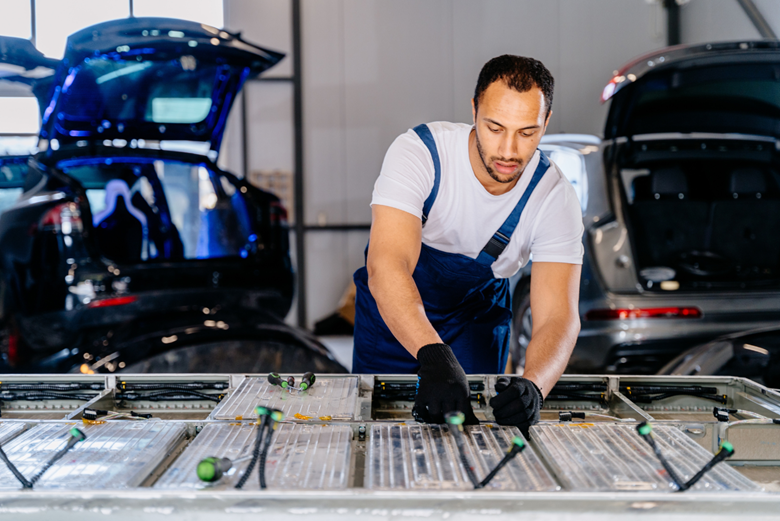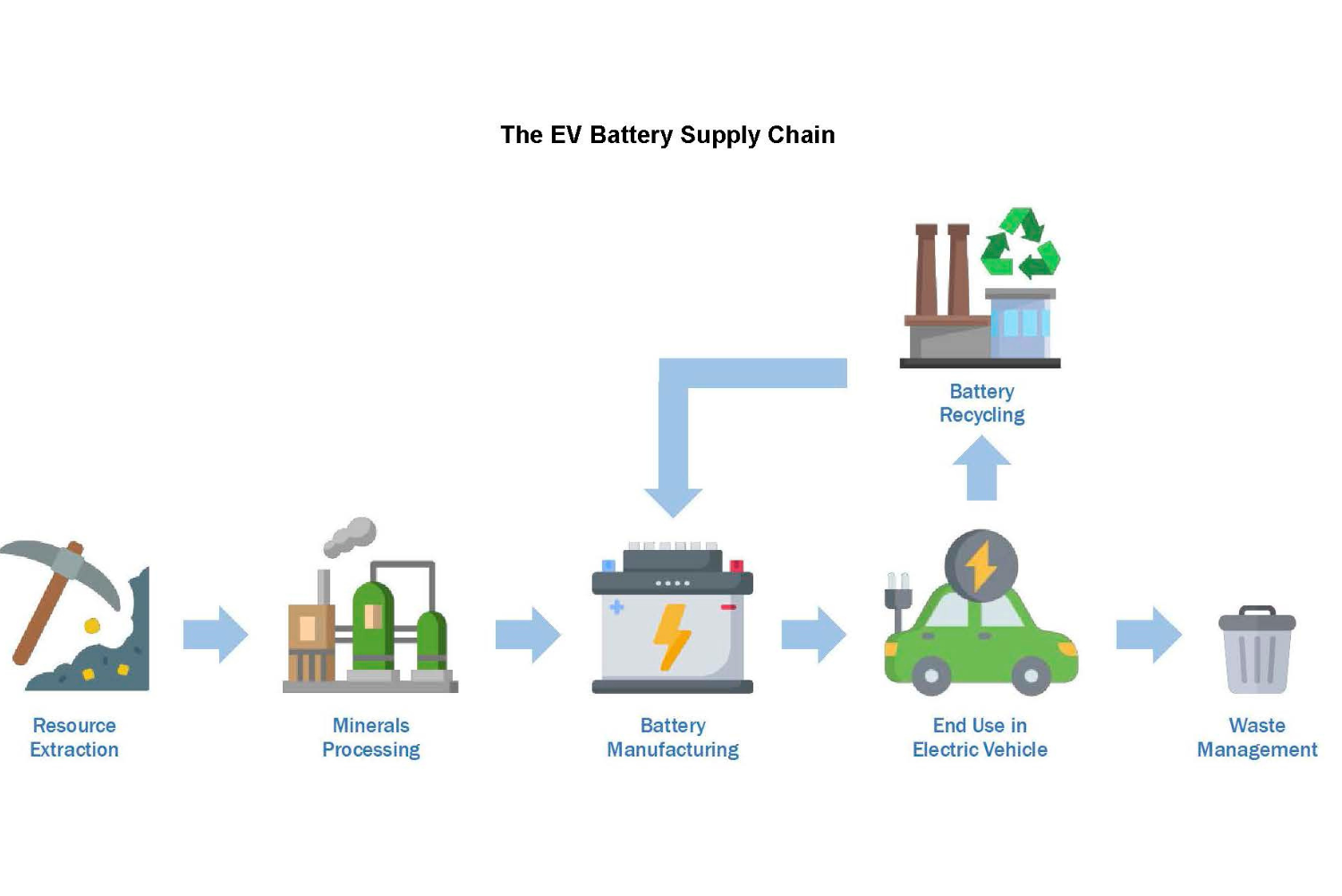
The global shift toward electric vehicle adoption is gaining speed, with the APEC region at the forefront.
Envision a world where electric vehicles (EVs) glide silently along streets, their batteries a marvel of high performance and zero emissions. Picture bustling urban centers bathed in the glow of clean energy, with the air crisp and clear, free from the smog of a myriad tailpipes. This vision of a sustainable future is not just a dream-it is within our grasp.
The global momentum toward EV adoption is accelerating, with the APEC region leading the convoy. APEC economies are setting ambitious electrification targets, fueling a surge in EV sales and demand for EV batteries.
An EV battery goes through a long-haul supply chain journey, traversing through mineral extraction, production, distribution, and recycling. Each node on this supply chain journey must be optimized to meet the rising demand for EVs while committing to sustainability. If the EV battery supply chain is a vast network of highways, APEC economies are at the crossroads of this network, supplying and processing the raw materials, its workers assembling battery components, installing them into vehicles, and handling post-use recycling and disposal.

Yet, these highways also come with bottlenecks and potholes-resource concentration, environmental impacts from mining and processing, and extreme weather events, not to mention trade tensions, regulatory complexities, and policy uncertainty.
Decongesting the EV battery supply chain requires investing in research and development to reduce reliance on primary minerals and enhance battery recyclability. Technological advancements could minimize dependence on specific resources, cutting down the environmental impact of mineral extraction and processing.
Right now, the industry heavily relies on minerals like lithium and cobalt, which are not only expensive but come with significant environmental risks and are sensitive to geopolitical tensions. What if we could reduce that reliance? Advancements in battery chemistry-such as sodium-ion batteries-could be a possible solution. These batteries use materials that are more abundant and easier to source. Companies are already starting to build sodium-ion manufacturing facilities, though widespread commercial use for EVs is still a few years away. The time to invest in research and development is now. Getting ahead of the curve could lessen future supply chain disruptions and lower costs in the long run.
As EV sales accelerate, efficient battery recycling becomes increasingly critical. Consider the current scenario: only five percent of EV batteries are recycled, resulting in a growing pile of waste and missed opportunities. Developing a circular economy, where old batteries are repurposed into new production lines, is essential. By focusing on recycling and recovering minerals, we can reduce our dependency on newly mined resources and mitigate the risks that come with a concentrated supply chain.
APEC economies could also benefit greatly from creating joint ventures to establish recycling hubs. Participating in these hubs would allow economies that lack raw materials to still play a key role in the EV battery supply chain. This isn't just about managing waste; it's about recovering valuable materials and keeping the wheels of sustainability turning.
By leveraging regional cooperation, economies can diversify supply chains, making it less likely that a single disruption will cause widespread issues. The more economies are invested in each other's supply chains, the less likely they are to impose trade barriers. Offering incentives like tax breaks and making it easier to do business can attract foreign investment in recycling facilities and EV production, while partnerships can help with tech transfers, spreading best practices, and strengthening the industry as a whole.
Furthermore, establishing clear standards and regulations is akin to setting the traffic lights for our journey, ensuring that everyone on the highway is receiving the same set of rules and information and driving accordingly. These standards will enable a cross-border circular economy, where recyclable materials flow seamlessly, and supply chain transparency is maintained. With clear guidance, manufacturers, consumers, and policymakers can navigate this landscape confidently, making informed choices that support our collective vision for a greener future.
EV battery supply chain transparency is just as important, too. For instance, digital tools could provide visibility the entire lifecycle of a battery, from mineral extraction to end-of-life recycling. This kind of transparency builds trust and allows supply chains to become more stable and resilient while ensuring adherence to international labor and environmental standards.
Moreover, with transparent data on emissions and sustainability, economies can work together to set global pricing mechanisms that account for the environmental costs of production, helping us all transition to sustainability.
The road ahead may be long and winding, with traffic jams along the way, but APEC can steer us in the right direction. With a greener EV battery supply chain, we won't just be imagining sustainable transportation; we won't just be picturing a sustainable world-we can make it a reality. As we shift into sustainability, we can create a world where technology and the environment advance hand in hand, and our cities, streets, and skies reflect the promise of a greener tomorrow.






